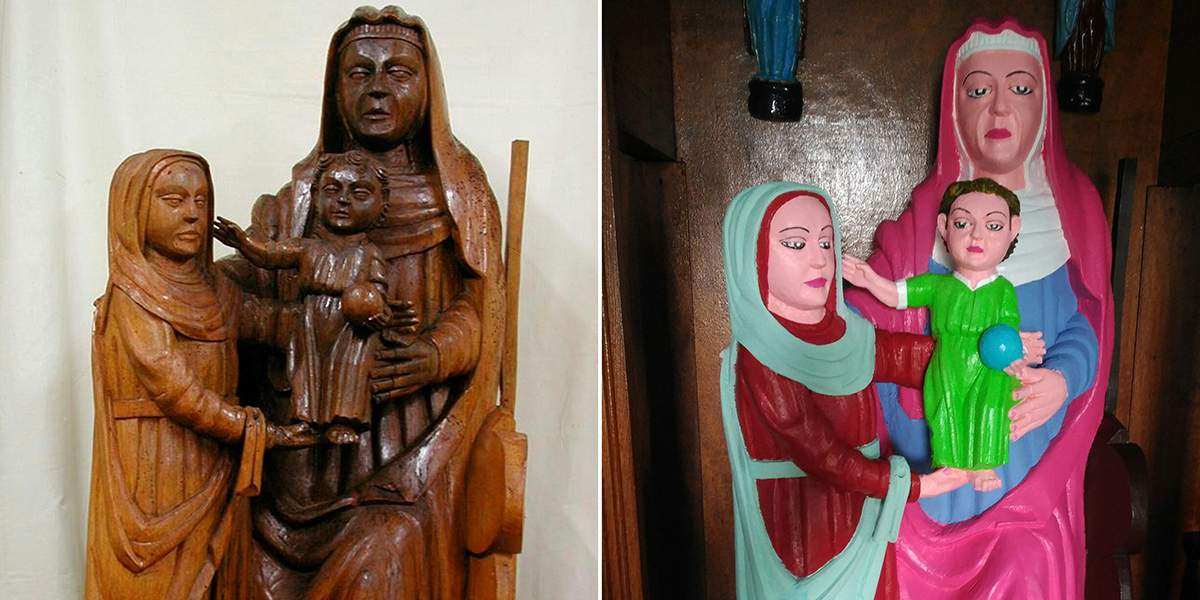After Borja’s world-famous Ecce homo, the 19th-century fresco that became a celebrity after a disastrous restoration by Cecilia Giménez, a sprightly parishioner and amateur painter who has (unintentionally) created something of a worldwide icon, another atrocious restoration is holding sway again in Spain, but this time in Asturias, in the sanctuary of El Rañadoiro, a village in the mountain range of the same name, between the towns of Salas and Tineo. Unfortunate protagonists, this time, were a 15th-century wooden group depicting the Madonna and Child and St. Anne, a statue depicting St. Peter (which also retained its original colors), and other smaller sculptures, and the script was the same as forEcce homo: a local lady, an amateur painter, offered to restore the work in her own way, and the parish priest gave her permission. So, María Luisa Menéndez, with the approval of parish priest Arturo García (who, as the local newspaper El Comercio recounts, had been suspended ad divinis in 2011 for standing as a candidate in an election round) took very strong paints (probably common paints, of the kind used to paint house walls) and applied them to the sculptures, ending up daubing them very heavily: they now resemble plastic toys.
The group had experienced a recent restoration in 2003, thanks to a grant from the government of the Principality of Asturias. Now, restorer Luis Suárez Saro, responsible for that intervention, is demanding “that those who did and allowed this take responsibility. Now it will be necessary to verify whether the damage is reversible or not, and whether the original colors were removed to apply new ones. Because in this case it would be a disaster of even greater proportions.” Principality Education Councilor Genaro Alonso called for investigations into the case, and stressed that this intervention was “a revenge rather than a restoration.” The investigations will aim to ascertain how the facts unfolded, in particular whether, as they say, it was the parish priest who gave the go-ahead for the intervention: in Spain, restorations must in fact be authorized by the Dirección General de Patrimonio, which is in charge of protecting and preserving cultural property.
Also El Comercio reports the words of María Luisa Menéndez (by profession a merchant), who thus shielded herself, “I am not a professional painter, but I have always liked to paint and these images needed to be painted. So I painted them as I could, with the colors that I felt were right, and that people liked.” He added, speaking to journalist Azahara Villacorta, “ask people and you will see.”
Pictured is the group with the Madonna, Child and St. Anne before and after the surgery.
 |
| After Borja's Ecce Homo, another atrocious restoration in Spain: parishioner ruins 15th century wooden group |
Warning: the translation into English of the original Italian article was created using automatic tools. We undertake to review all articles, but we do not guarantee the total absence of inaccuracies in the translation due to the program. You can find the original by clicking on the ITA button. If you find any mistake,please contact us.